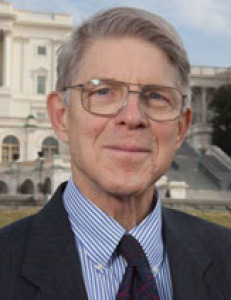USDA’s Innovation Center is making it easier for rural America to qualify for funding from the Office of Rural Development’s $222 billion loan portfolio and $36.6 billion in fiscal 2018 appropriated funds. It’s all part of an administration push to create more rural jobs and boost economic growth.
Rita Clary has no doubts that this new push is paying off. After years of working at the Kansas Rural Water Association and now as assistant program manager with the National Rural Water Association, she says that “If it wasn’t for USDA Rural Development (RD), a lot of small (water and wastewater) systems across the United States could not afford to upgrade or rebuild their systems.”
Clary says a major advance came when RD launched its on-line RD Apply process. She also welcomes the RD Innovation Center’s new Disaster Recovery Team. Sharing her RD funding expertise nationwide as part of this national initiative, Clary is currently working with Puerto Rico’s water systems to accelerate its recovery from hurricane damage.
Kansas Rural Water Association wastewater technician Charlie Schwindamann adds that “RD Apply makes it far easier for systems to get funding, streamlining the process.” That’s critical, he says, because “there’s more need than there is funding.”
To support the streamlining, Agriculture Secretary Sonny Perdue has prioritized rural issues at USDA. The first major change came in April 2017 when President Trump launched the Interagency Task Force on Agriculture and Rural Prosperity chaired by Perdue. The second came two months later when Perdue appointed Anne Hazlett as assistant to the secretary for Rural Development and launched USDA’s new Innovation Center, designed to deliver more support, more efficiently.
As shown by new funding such as an extra $4 billion that Congress provided and that Hazlett is disbursing for rural water and sewer projects, these actions are paying off.
One beneficiary is Gridley, Kansas, population 324. Clary and Schwindamann helped Gridley get an RD SEARCH grant to help fix wastewater disposal problems. Clary says Gridley may end up with “a million-dollar debt . . . but those people also enjoy small-town USA and they know their wastewater system needs improvement, so they’re willing to to pay the bill so they can stay in small-town USA.”

Greg Fogel, NSAC
Yet achieving USDA’s rural goals won’t come easily or cheaply. That’s clear from the Rural Prosperity Task Force’s initial report. Perdue warns in the report that “while other sectors of the American economy have largely recovered from the Great Recession, rural America has lagged in almost every indicator.”
The task force report goes on to blame “labor-saving productivity” partly for “the steady decline in the employment shares of farming, mining, and manufacturing over the past half century” in rural communities. The report concludes that without substantial growth in demand for farming, mining, and rural manufacturing products, “rapid productivity increases may further depress rural employment in these sectors.”
For Hazlett, one way to attack the problem is “to be in the field and learn from people who are on the ground.” To accelerate this learning, in June last year USDA created RD’s Innovation Center to “share best practices for rural economic development” – as the center is doing now in Puerto Rico.
Interested in more news about the farm bill, trade issues, pesticide regulations and more hot topics?
Sign up here for a four-week Agri-Pulse free trial. No risk and no obligation to pay.
Just 16 months after launching the Innovation Center, USDA says it’s already racking up achievements that include creating:
- The Rural Workforce Innovation Network (RWIN), working with local partners to “develop solutions and tools that meet the needs of rural workers and employers.”
- The Rural Economic Development Initiative (REDI), providing “targeted regional planning assistance” for rural communities to help them get grants and loans and attract private investors.
- OneRD Guaranteed Loan Regulatory Reform, combining complex RD regulations into a single, simpler regulation for RD’s many loan programs to “simplify application processes, incorporate modern lending practices, accelerate loan approval processes, and increase the amount of capital available in rural communities.”
- The Disaster Recovery Team, working with FEMA to improve interagency disaster coordination and recovery to “make sure the unique needs of small and rural towns are represented.”
As Hazlett explains, bringing rural America up to speed with the rest of the U.S. is a complex challenge. Solutions, Hazlett says, clearly call for adequate federal funding but may depend even more on what the Innovation Center is pursuing: new ideas and new locally and regionally focused infrastructure, partnerships, and innovation. She adds that the center’s work on “simplifying our regulations and streamlining our program resources” is aimed at making USDA “a better partner to rural leaders in building prosperity.”
As a close observer of USDA’s rural programs, National Sustainable Agriculture Coalition Policy Director Greg Fogel concludes that Hazlett “is doing a good job” and that “from what we can tell, the money is mostly getting out the door and funding important rural development projects.”
Fogel hopes, however, that House and Senate conferees working on the 2018 farm bill agree to the Senate provision that would require Perdue to upgrade Hazlett, pending Senate confirmation, from her current role as Assistant to the Secretary for Rural Development to Undersecretary for Rural Development. “We still believe that RD needs to be a core mission of the department, and that the mission needs to be represented on the subcabinet by an undersecretary,” he says.
For more news, go to: www.Agri-Pulse.com


